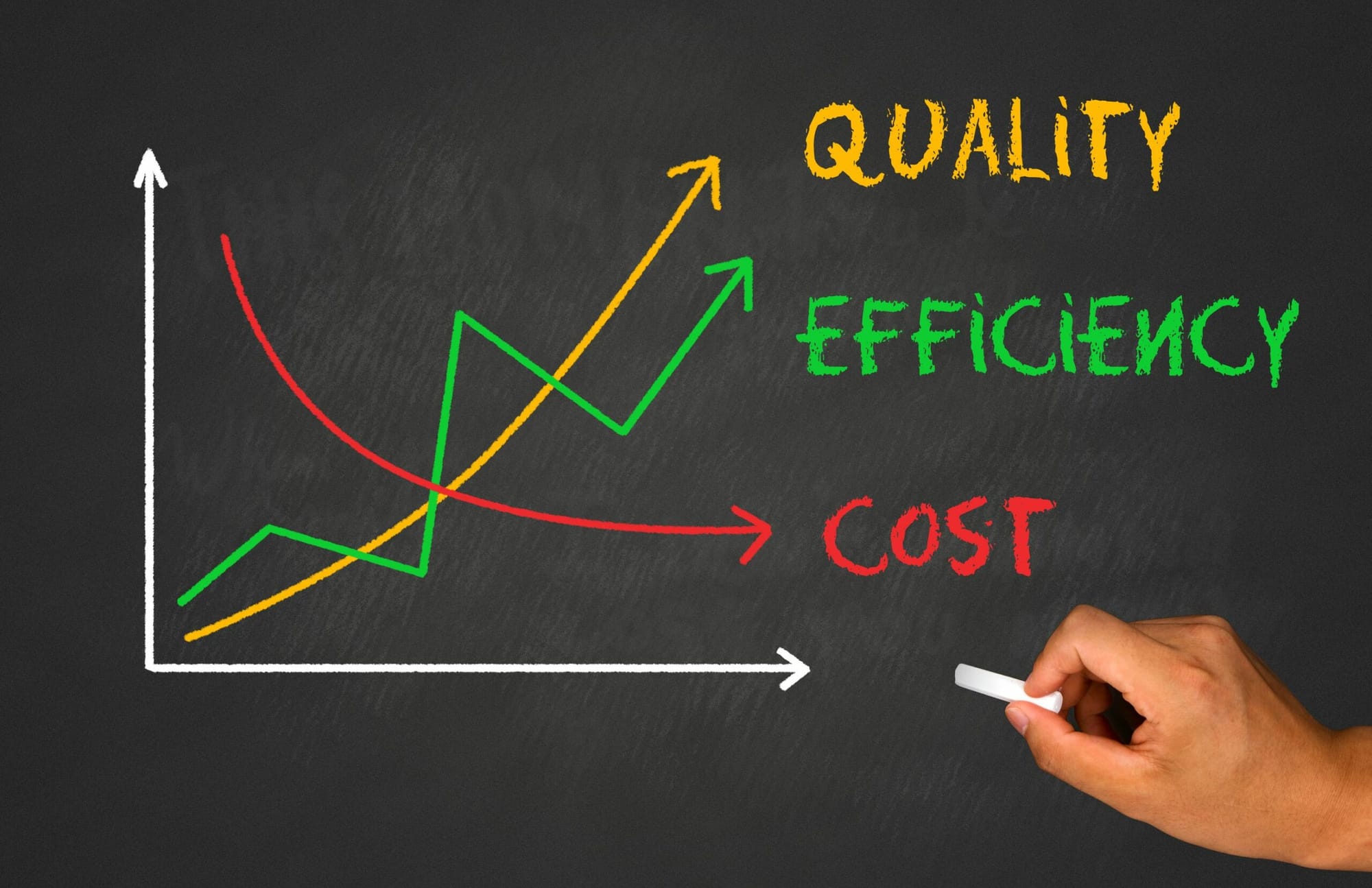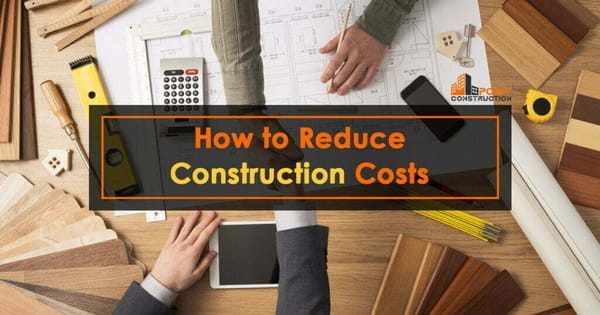In residential construction, building and renovation works, finding the sweet spot between affordability and quality is often a challenge. That's where the concept of Value Engineering (VE) comes into play. Originally conceived during World War II to tackle shortages and find cost-effective solutions in manufacturing, VE has since found a significant place in the construction industry.
Let's take a closer look at how Value Engineering can make a difference in residential building projects, blending efficiency and budget control without compromising design or quality.
Understanding the Core of Value Engineering
Defining Value Engineering
Value Engineering is a strategic method used in construction
to maximise the overall value of a project.
In simple terms, it’s about ensuring that every element of your home serves a purpose and is worth the cost. The goal is to identify areas where costs can be reduced while enhancing functionality and quality. Think of VE as a tool that helps you and your construction team make smarter decisions, ensuring that your investment goes further.
The Principles of Value Engineering
VE is rooted in several key principles that guide the decision-making process:
- Function-Cost-Worth Analysis: This principle is about understanding the purpose of each element in your home and evaluating whether its cost aligns with its importance and utility.
- Life Cycle Costing: VE encourages looking beyond the initial costs and considering the longer-term financial impact, focusing on sustainability and ongoing savings.
- Collaborative Effort: Successful VE is a team effort, involving architects, engineers, builders, and you—the homeowner. Collaboration is crucial in identifying innovative solutions that meet budget and quality targets.
Why Value Engineering Matters in Residential Construction
Given the rising costs of materials and the increasing complexity of building regulations, VE has become more relevant than ever in residential construction. It offers a structured approach to tackling budget constraints, environmental considerations, and client expectations, all while striving for architectural integrity. By integrating VE principles from the early stages of design through to construction, homeowners can achieve a home that not only fulfils their vision but is also built to last and cost-effective to maintain.
The Value Engineering Process: Navigating the Steps
The implementation of Value Engineering in residential building isn't a one-size-fits-all but a structured process tailored to each project's unique needs. Understanding these steps can illuminate how leveraging VE can lead to both financial savings and enhanced living spaces.
The Step-by-Step Guide to Applying VE
- Preparation: Beginning with a clear understanding of the project's goals and budget is crucial. The VE team gathers to align on the vision and objectives of the home build or renovation.
- Information Phase: This involves gathering detailed data about the project. Understanding the requirements, constraints, and potential risks helps in laying a solid foundation for the VE analysis.
- Function Analysis: Each component or system in the project is analysed for its function—asking, “What must this do?” This step ensures that every element of the build serves a purpose and contributes to the overall value.
- Creative Phase: Here’s where innovation kicks in. The team brainstorms alternative ways to achieve the desired functions, often leading to cost-saving opportunities and design improvements.
- Evaluation Phase: The ideas generated are critically evaluated against criteria such as cost, feasibility, and impact. This selection process ensures that only the most viable solutions advance.
- Development Phase: Selected ideas are developed into detailed proposals, outlining the functional, financial, and technical aspects.
- Presentation Phase: The final VE proposals are presented to decision-makers, often including the homeowner, for approval. This phase includes a comprehensive discussion on the potential impacts and benefits of each proposal.
By methodically following these steps, VE ensures that every decision made in the construction process is intentional, cost-effective, and value-adding.
Applying VE in Residential Construction: Strategies and Examples
Adopting Value Engineering in residential projects isn't just about cutting costs—it’s about
rethinking how value can be maximised through intelligent design and resource allocation.
Here are some practical ways VE can shape residential construction:
Cost-Effective Design Choices
Opting for designs that are both aesthetically pleasing and financially sensible is at the heart of VE. For example, an open floor plan not only creates a modern, spacious environment but can also reduce construction costs by eliminating unnecessary walls and materials.
Material Selection and Sustainability
Value Engineering encourages the selection of materials that offer durability, sustainability, and cost savings. Techniques like using reclaimed wood or energy-efficient windows add value by reducing long-term expenses and environmental impact.
Innovation in Construction Methods
Modern construction methods such as modular or prefabricated homes represent how VE principles are applied to reduce waste, shorten construction timelines, and achieve better quality control, all of which contribute to a project's overall value.
Navigating Challenges in VE Implementation
While Value Engineering offers a path to smarter, more efficient construction, it doesn't come without challenges. Resistance from stakeholders accustomed to traditional methods, budgetary constraints, and the balance between cost-saving and design integrity are issues that may arise. Addressing these challenges requires open communication, a willingness to explore alternative solutions, and a commitment to the project's long-term vision.
The Future of VE in Residential Construction
As we look ahead, the role of technology in Value Engineering is set to expand. Tools such as Building Information Modelling (BIM) and advancements in sustainable materials and practices promise to further enhance the efficiency and impact of VE in residential building projects. Embracing these innovations, along with a continued focus on sustainability and smart design, will push the boundaries of what’s possible in value-driven home construction.
Conclusion
Value Engineering in residential construction represents a powerful approach to building and renovating homes that are not only cost-effective but are also high in quality and functionality. By engaging in the VE process, homeowners and construction professionals alike can unlock significant savings and add lasting value to their projects. As construction challenges evolve and new technologies emerge, VE will undoubtedly continue to play a crucial role in shaping the future of residential building. Whether embarking on a new construction project or planning a renovation, considering VE from the outset can lead to smarter, more sustainable, and ultimately more rewarding outcomes for homeowners.
Frequently Asked Questions
- QUESTION: Can Value Engineering actually reduce the quality of my home?
Answer: No, the aim of VE isn't to compromise quality but to enhance it by ensuring you spend wisely on things that really add value and functionality to your home.
- QUESTION: Is VE only beneficial at the start of a project?
Answer: While integrating VE at the beginning can have significant benefits, it's a flexible approach that can provide value at various stages of a project.
- QUESTION: How do homeowners get involved in the VE process?
Answer: Homeowners play a critical role in setting the project's goals and priorities. Effective communication with the VE team ensures that homeowner preferences are considered and met.
- QUESTION: Are there any additional costs associated with implementing VE?
Answer: The process itself requires an investment of time and resources but is designed to identify savings and enhance value, offering a return on investment that far outweighs the initial costs.
- QUESTION: Where can I learn more about VE and its application in residential construction?
Answer: Many resources are available, including construction industry publications, online courses, and professional organisations dedicated to Value Engineering. Engaging a professional with VE experience can also provide tailored insights and guidance.







